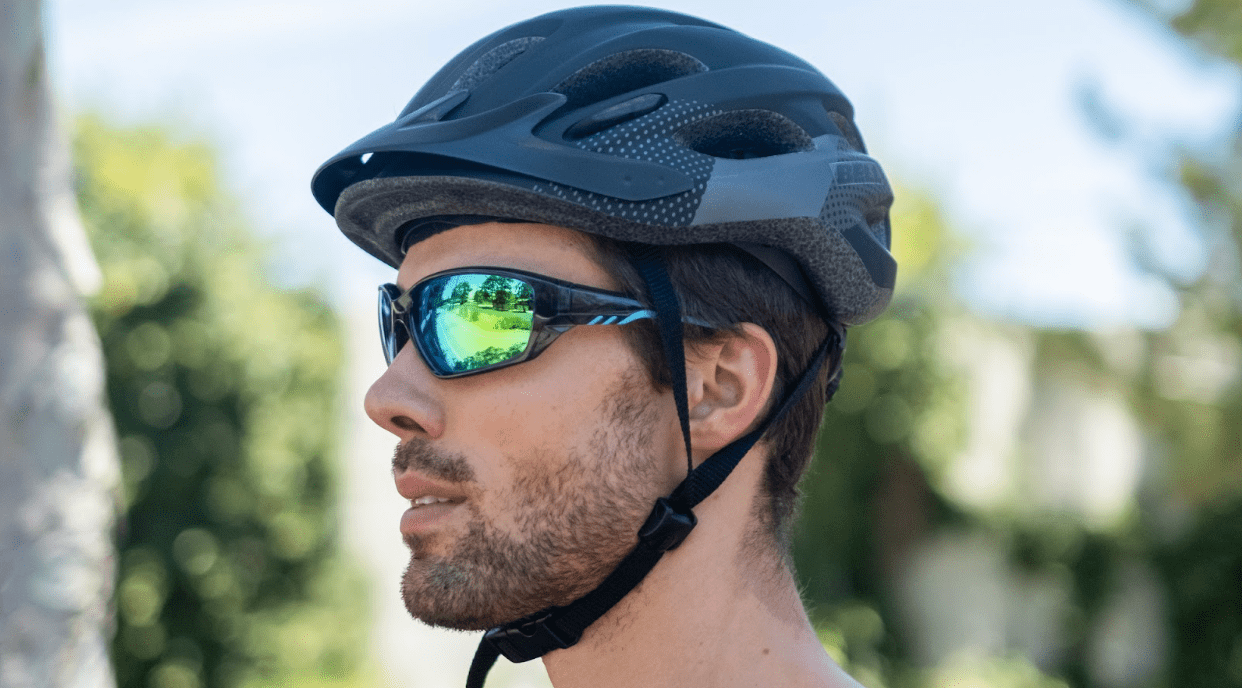Lifestyle
Exploring the Dangers of Wearing Outdated Prescription Safety Glasses

In the vast spectrum of personal safety measures, one element often goes unnoticed: the precision of our prescription safety glasses. If you go for the best Prescription Safety Glasses, they serve a dual purpose – they shield our eyes from potential hazards and ensure we view our surroundings clearly. However, just as we wouldn’t use expired medicine, wearing outdated prescription safety glasses can be detrimental. Delving into the repercussions of not updating these protective eyepieces, we find dangers that stretch beyond mere blurred vision.
Why People Use Outdated Prescription Safety Glasses
We’ve all been there, clinging onto a pair of glasses longer than we should. Why? Maybe because of the cost associated with buying a new pair. For others, it’s the belief that their eyes haven’t changed much. And some are simply unaware of the implications of using outdated prescription glasses.
The Role of Safety Glasses
Safety glasses have become an indispensable tool in various professions and activities, serving a dual purpose that combines protection with vision correction. Their significance goes beyond mere eyewear, as they act as shields against potential dangers, all the while ensuring visual clarity. Let’s delve deeper into the multifaceted roles of these protective spectacles:
#1 Protection from Physical Hazards:
- Flying Debris: In environments like construction sites or woodworking workshops, tiny particles, or metal shavings can become airborne. Safety glasses act as a barrier, preventing these from injuring the eyes.
- Chemical Splashes: In industries involving chemicals, accidental splashes are a risk. Safety glasses provide a shield, ensuring harmful chemicals don’t come into contact with the eyes.
- High Temperatures: Those working around furnaces or in metalwork settings are exposed to extreme heat and sparks. Safety glasses can help protect the eyes from heat-related injuries.
#2 Protection from Light-Related Hazards:
- UV Protection: Extended exposure to ultraviolet (UV) rays can harm our eyes, leading to conditions like cataracts. Many safety glasses come with a UV protective layer, shielding the eyes from these harmful rays.
- Glare Reduction: In brightly lit environments or outdoors, glare can impede vision. Polarized or anti-reflective lenses in safety glasses can help reduce this glare, ensuring clear sight.
- Protection from Intense Light: Welders, for instance, are exposed to extremely bright light which can damage the retina. Specialized safety glasses ensure such intense light does not harm the eyes.
#3 Vision Correction:
- Prescription Integration: For those with vision problems, safety glasses aren’t just about protection. They can be customized with the wearer’s prescription, ensuring they see clearly while working.
- Reduced Eye Fatigue: Properly corrected vision means the eyes aren’t straining to focus, reducing fatigue and increasing efficiency in tasks.
Dangers of Wearing Outdated Prescription Safety Glasses
When it comes to our health and safety, we often take numerous precautions, from wearing helmets while biking to applying sunscreen before stepping out. But there’s one area that people often overlook: the importance of wearing the right prescription for their safety glasses. Using outdated prescription safety glasses is not only inconvenient but also dangerous. Here’s a deeper look at why:
#1 Impaired Vision:
- Difficulty in Focusing: An incorrect prescription can make it hard to focus on objects, causing them to appear either too close or too far. This misjudgment can be especially perilous in jobs requiring precision or when operating machinery.
- Eye Strain: Wearing glasses with an outdated prescription force the eyes to work harder to focus, leading to strain. Over time, this can even weaken the eyes and exacerbate vision problems.
#2 Physical Strain and Health Implications:
- Headaches: Constantly struggling to see through incorrect lenses stresses the visual system, which can result in recurrent headaches or even migraines.
- Posture Issues: To get a clearer view, individuals might unknowingly tilt their heads or squint, leading to neck or back problems over time.
- Fatigue: The continuous effort to see can lead to overall fatigue, reducing productivity and increasing irritability.
#3 Increased Risk of Accidents:
- Misjudgment: An incorrect prescription can lead to misjudgment of distance, depth, or speed. This can result in stumbling, tripping, or even severe accidents, especially in professions like construction or manufacturing.
- Driving Hazards: For those driving with outdated glasses, the risk is magnified. Misjudging the distance of an oncoming car or missing traffic signs can have fatal consequences.
#4 Degradation of Lens Quality:
- Scratches and Damages: Older glasses are more likely to have scratches, cracks, or other damages. These imperfections not only distort vision but can also become weak points where the lens might shatter upon impact.
- Light Distortion: Scratches can cause light to scatter, creating blinding glares or reflections, especially in bright conditions or while driving at night.
#5 Compromised Protection Against External Hazards:
- Weakened Structural Integrity: Over time, even safety glasses can weaken. Their reduced structural integrity means they might not provide adequate protection against flying debris, chemicals, or other workplace hazards.
- UV Protection Deterioration: Many safety glasses come with UV protection. However, with time, this protective layer can wear off, exposing the eyes to harmful ultraviolet rays, which can lead to conditions like cataracts.
#6 Mental Strain:
- Reduced Confidence: Struggling to see can reduce an individual’s confidence in their abilities, especially in professional settings.
- Increased Anxiety: The constant fear of potential accidents or mishaps due to blurred vision can elevate stress levels.
Preventive Measures
So, how can you avoid these dangers?
- Schedule regular eye check-ups. Your eyes evolve, and so should your prescription.
- Be aware of changes in your vision. If you squint more or get frequent headaches, it might be time for a change.
- Invest in quality. Remember, these glasses protect one of your most vital senses.
Wrapping Up
Wearing the correct prescription safety glasses is not just about clarity of sight; it’s a holistic approach to ensuring our physical, mental, and occupational well-being. By sidelining the importance of up-to-date prescriptions, we inadvertently expose ourselves to a myriad of risks. The investment in regular eye examinations and updated glasses, therefore, is not just about vision; it’s an investment in safety, productivity, and peace of mind.
Lifestyle
Wanda Knight on Blending Culture, Style, and Leadership Through Travel

The best lessons in leadership do not always come from a classroom or a boardroom. Sometimes they come from a crowded market in a foreign city, a train ride through unfamiliar landscapes, or a quiet conversation with someone whose life looks very different from your own.
Wanda Knight has built her career in enterprise sales and leadership for more than three decades, working with some of the world’s largest companies and guiding teams through constant change. But ask her what shaped her most, and she will point not just to her professional milestones but to the way travel has expanded her perspective. With 38 countries visited and more on the horizon, her worldview has been formed as much by her passport as by her resume.
Travel entered her life early. Her parents valued exploration, and before she began college, she had already lived in Italy. That experience, stepping into a different culture at such a young age, left a lasting impression. It showed her that the world was much bigger than the environment she grew up in and that adaptability was not just useful, it was necessary. Those early lessons of curiosity and openness would later shape the way she led in business.
Sales, at its core, is about connection. Numbers matter, but relationships determine long-term success. Wanda’s time abroad taught her how to connect across differences. Navigating unfamiliar places and adjusting to environments that operated on different expectations gave her the patience and awareness to understand people first, and business second. That approach carried over into leadership, where she built a reputation for giving her teams the space to take ownership while standing firmly behind them when it mattered most.
The link between travel and leadership becomes even clearer in moments of challenge. Unfamiliar settings require flexibility, quick decision-making, and the ability to stay calm under pressure. The same skills are critical in enterprise sales, where strategies shift quickly and no deal is ever guaranteed. Knight learned that success comes from being willing to step into the unknown, whether that means exploring a new country or taking on a leadership role she had not originally planned to pursue.
Her travels have also influenced her eye for style and her creative pursuits. Fashion, for Wanda, is more than clothing; it is a reflection of culture, history, and identity. Experiencing how different communities express themselves, from the craftsmanship of Italian textiles to the energy of street style in cities around the world, has deepened her appreciation for aesthetics as a form of storytelling. Rather than keeping her professional and personal worlds separate, she has learned to blend them, carrying the discipline and strategy of her sales career into her creative interests and vice versa.
None of this has been about starting over. It has been about adding layers, expanding her perspective without erasing the experiences that came before. Wanda’s story is not one of leaving a career behind but of integrating all the parts of who she is: a leader shaped by high-stakes business, a traveler shaped by global culture, and a creative voice learning to merge both worlds.
What stands out most is how she continues to approach both leadership and life with the same curiosity that first took her beyond her comfort zone. Each new country is an opportunity to learn, just as each new role has been a chance to grow. For those looking at her path, the lesson is clear: leadership is not about staying in one lane; it is about collecting experiences that teach you how to see, how to adapt, and how to connect.
As she looks to the future, Wanda Knight’s compass still points outward. She will keep adding stamps to her passport, finding inspiration in new cultures, and carrying those insights back into the rooms where strategy is shaped and decisions are made. Her legacy will not be measured only by deals closed or positions held but by the perspective she brought, and the way she showed that leading with a global view can change the story for everyone around you.
-

 Tech5 years ago
Tech5 years agoEffuel Reviews (2021) – Effuel ECO OBD2 Saves Fuel, and Reduce Gas Cost? Effuel Customer Reviews
-

 Tech6 years ago
Tech6 years agoBosch Power Tools India Launches ‘Cordless Matlab Bosch’ Campaign to Demonstrate the Power of Cordless
-

 Lifestyle6 years ago
Lifestyle6 years agoCatholic Cases App brings Church’s Moral Teachings to Androids and iPhones
-

 Lifestyle5 years ago
Lifestyle5 years agoEast Side Hype x Billionaire Boys Club. Hottest New Streetwear Releases in Utah.
-

 Tech7 years ago
Tech7 years agoCloud Buyers & Investors to Profit in the Future
-

 Lifestyle5 years ago
Lifestyle5 years agoThe Midas of Cosmetic Dermatology: Dr. Simon Ourian
-

 Health7 years ago
Health7 years agoCBDistillery Review: Is it a scam?
-

 Entertainment6 years ago
Entertainment6 years agoAvengers Endgame now Available on 123Movies for Download & Streaming for Free
